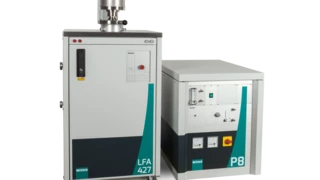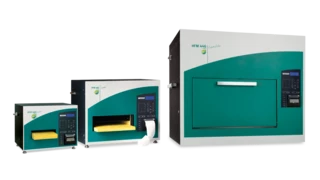
11.12.2023 by Aileen Sammler
The New Guarded Heat Flow Meter TCT 716 Lambda: Extension of the NETZSCH Family of Thermal Conductivity Testers
We proudly present: The new guarded heat flow meter by NETZSCH Analyzing & Testing for measuring the thermal resistance and Thermal ConductivityThermal conductivity (λ with the unit W/(m•K)) describes the transport of energy – in the form of heat – through a body of mass as the result of a temperature gradient (see fig. 1). According to the second law of thermodynamics, heat always flows in the direction of the lower temperature.thermal conductivity of medium-conductive samples.
Thermal conductivity testing is a pivotal process in the fields of materials science and engineering. It involves measuring a material's capability of conducting heat, which is crucial for applications ranging from electronics to aerospace. In electronics, for instance, low thermal resistance ensures devices like microprocessors being operated efficiently without overheating. In the aerospace and automotive industries, high thermal resistance is essential for materials to withstand extreme temperatures. Understanding these properties is key to selecting the right materials, ensuring product reliability, and optimizing design and manufacturing processes.
The TCT 716 Lambda: A New Era in Thermal Conductivity Testing
The brand-new TCT 716 Lambda Guarded Heat Flow Meter completes the NETZSCH family of Thermal ConductivityThermal conductivity (λ with the unit W/(m•K)) describes the transport of energy – in the form of heat – through a body of mass as the result of a temperature gradient (see fig. 1). According to the second law of thermodynamics, heat always flows in the direction of the lower temperature.thermal conductivity testers. This Guarded Heat Flow Meter (GHFM) closes the gap between classical Heat Flow Meters (HFM) and Laser Flash Analyzers (LFA), offering the unique possibility to measure two samples at the same time with a blend of precision and ease-of-use. Sample dimensions are 50.8 mm in diameter and up to 31.8 mm thick. This is larger than those used in LFA measurements, making the TCT 716 Lambda particularly advantageous for inhomogeneous samples.
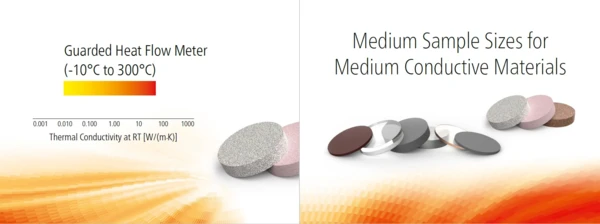
Why a “Guarded” Heat Flow Meter?
With a Guarded Heat Flow Meter, Thermal ConductivityThermal conductivity (λ with the unit W/(m•K)) describes the transport of energy – in the form of heat – through a body of mass as the result of a temperature gradient (see fig. 1). According to the second law of thermodynamics, heat always flows in the direction of the lower temperature.thermal conductivity and thermal resistance can be precisely determined. An insulating layer (guard) surrounds the heat source and a temperature sensor. Operation at higher temperatures may lead to lateral heat losses to the surrounding environment, which can result in significant measurement errors. A guarded test stack, however, minimizes this effect and increases the measurement accuracy.

USPs of the TCT 716 Lambda
- Optimal Specimen Dimensions: The TCT 716 Lambda supports smaller specimens compared to conventional HFM and larger ones than those used in LFA. This feature allows for the investigation of both homogeneous and inhomogeneous materials across a range of low to medium Thermal ConductivityThermal conductivity (λ with the unit W/(m•K)) describes the transport of energy – in the form of heat – through a body of mass as the result of a temperature gradient (see fig. 1). According to the second law of thermodynamics, heat always flows in the direction of the lower temperature.thermal conductivity values.
- Buy One, Get One Free: A standout feature is its two independent test stacks, enabling tests on either one or two specimens simultaneously. Both stacks (sample size can vary) can be operated across the entire temperature range from -10°C to 300°C.
- Innovative and Sustainable Cooling: The device uses CO2 as a natural refrigerant, marking a step towards sustainable and energy-efficient cooling. This patented method offers excellent heat transfer coefficients and low viscosity, eliminating the need for expensive chillers.
- Robust Design and Easy Handling: The device boasts a robust design with user-friendly software and hardware. It is fully software-controlled, including mean temperature and applied force, allowing for an infinite number of steps in test cycles for optimal performance.
- Precise Control and High Resolution: The TCT 716 Lambda offers precise temperature control with a resolution of 0.1°C and is equipped with multiple high-resolution detectors for accurate measurement across the specimen.
- Integrated Force Sensor: The integrated force sensors with a feedback loop ensure precise clamping force, maintaining reproducible thermal contact between the instrument plates and the test sample.
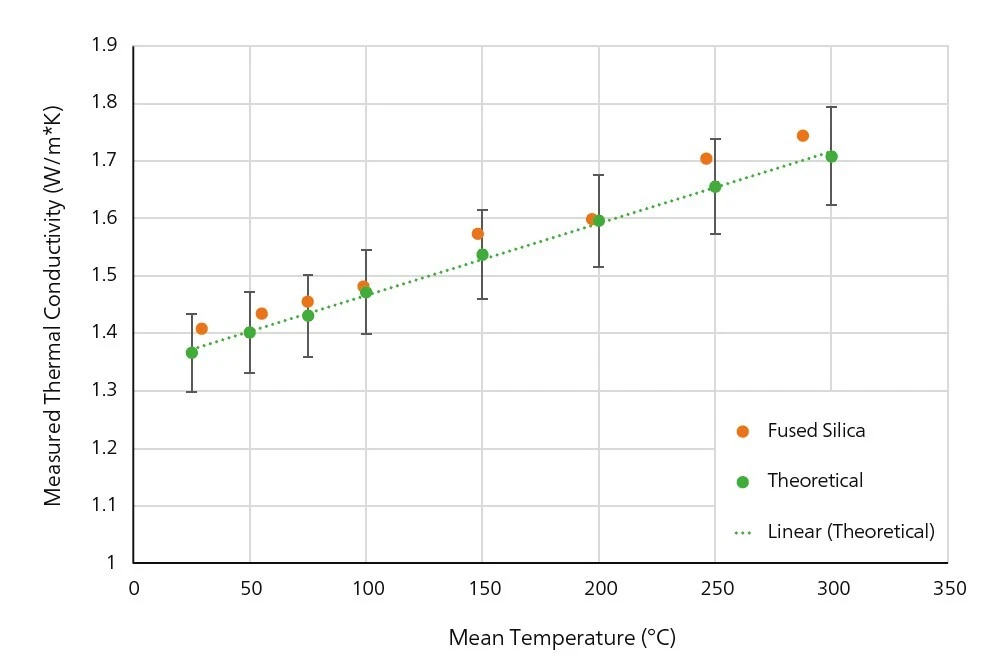
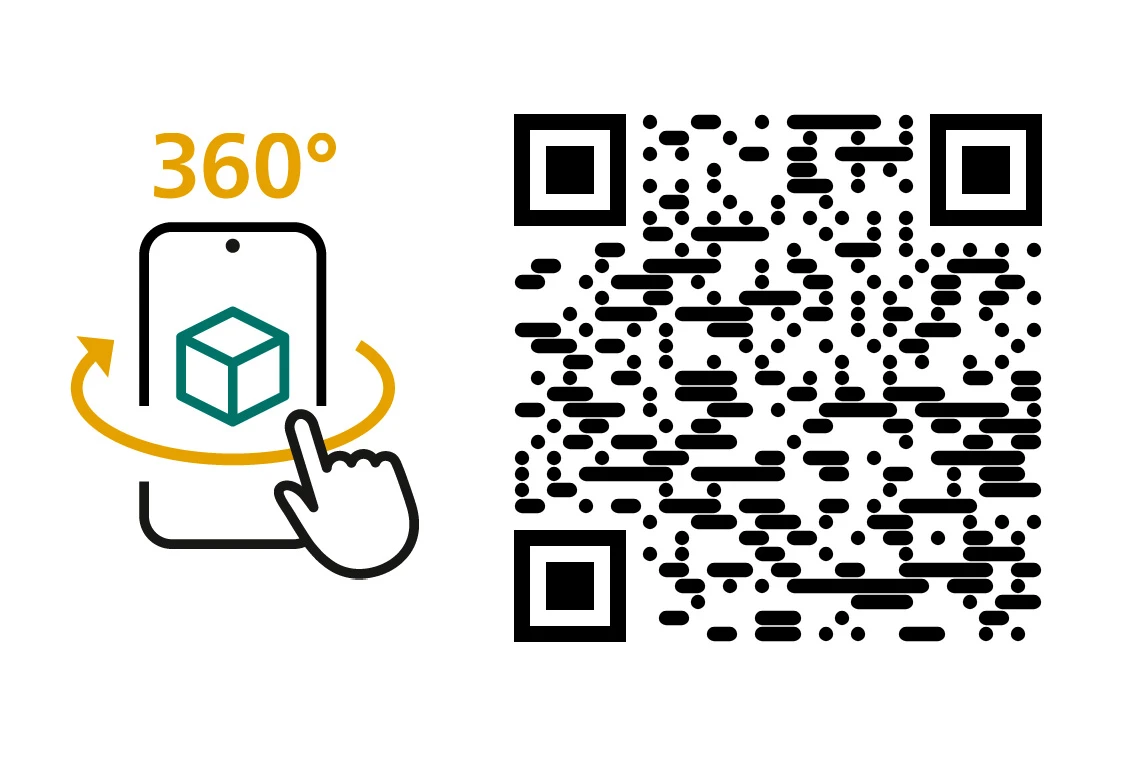
Bring the TCT 716 Lambda into your laboratory with the click of a button!
NETZSCH 360 Degrees allows for exploring our instrument in a virtual 3D view!
Simply scan the QR code and get a 3D model of the instrument directly on your mobile phone or tablet.
With the help of the latest AR Technology (Augmented Reality), the 3D model can easily be placed in your laboratory in its original life size.
Summary
The TCT 716 Lambda effectively closes the gap between Heat Flow Meter and Laser Flash Analyzer technologies, as it offers the capability of analyzing specimens with optimum dimensions: smaller than conventional HFM and larger than LFA. This enables investigations of the thermal resistance and thermal conductivity on homogeneous and inhomogeneous materials with thermal conductivity values ranging from low to medium, crucial for a wide range of materials including metals, polymers, and composites. The possibility to measure two specimens simultaneously marks a significant advancement of the Guarded Heat Flow Meter in thermal conductivity testing, making it an invaluable tool for researchers and engineers.

